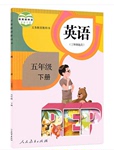题目内容
Australians have evidently realized the fact that water means life and we need to he more thoughtful in our use of this rather precious resource.Since the year 2000, Australians have managed to reduce their use of water by 14% . In the most populous city, Sydney, they've managed to use less water in 2007 than in 1974, even though the city grew by l. 2 million souls in this period.
Across the country nearly 20% of all households have water tanks.That would probably be due, in large part, to the various state governments offering generous rebates. In NSW, for example, where 24,000 households have taken up the offer, you can get $1,500 AUD back if you fix a 7,000 + litre tank and have it attached into your toilet and washing machine.
Creywater use has taken off too. The Australian Bureau of Statistics suggest that it's now the second most common source of water in Australia, with over half of the country's homes reusing water from their washing machines, showers and baths. The state of Victoria leads with 70% using greywater, and Queensland, coming close behind with 63%.
Up in the northern state of.Queensland, some of their dams have been below 20%. Sydney's main dam is only at 56% of its potential capacity.
The country's ongoing drought(干旱) has seen more than 95% of the length of the Murray- Darling Basin ( the two major river systems that supply the nation's 'food basket' ) regarded as ' degraded', Supply of water has become such an issue that hydro-electric power(水力发电) output has dropped 7% in a recent 9 year period for the states of NSW, Victoria and Tasmania.Not good for promoting our uptake understanding of renewable energy in these climate changing times.But at least the message is getting through about making every drop count.
1.The underlined word "rebate" in paragraph 2 probably means .
A. discount or allowance B. water tanks for free
C. agreements or payment D. washing machine of high quality
2.Which of the following statements is TRUE?
A. The state of Victoria is playing a leading role in greywater use.
B. More water has been used in Australia with the growing population.
C. The state of Queensland gets its water mostly from the north of its state.
D. Some of the dams in Queensland are too weak to hold potential water.
3.We can learn from the last paragraph that .
A. the country's water shortage is partly due to continuous drought
B. large quantities of water are being used to produce electricity
C. the author hopes water resource could be used to the fullest
D. the author disagrees with the use of renewable energy
4.The passage is likely to appear in .
A. a scientist's diaryB. a history paper
C. a travel guidebookD. a newspaper
1.A
2.A
3.C
4.D
【解析】
试题分析: 本文讲述澳大利亚已经意识到水的重要性,对于珍贵的资源要更加谨慎使用,采取各种措施来加以施行及由于缺少水所造成的问题;
1.A 细节理解题。根据第二段提到In NSW, for example, where 24,000 households have taken up the offer, you can get $1,500 AUD back if you fix a 7,000 + litre tank and have it attached into your toilet and washing machine.在新威尔士州,如果你安装700+升的水箱与你的厕所和洗衣机连接,你可以得到1.500澳元的补助,故选B项。
2.A 细节理解题。根据第三段The state of Victoria leads with 70% using greywater, and Queensland, coming close behind with 63%.可知Victoria洗涤水的利用达到百分之七十,而Queensland是百分之六十三,故选A项正确。
3.C细节理解题。根据最后一段提到But at least the message is getting through about making every drop count最后这则信息让我们意识到每滴水的重要性,故选C项。
4.D推断题。本文讲述澳大利亚已经意识到水的重要性,重复利用水,及缺少水所造成的后果 ,这样的文章应出现在报纸上在,故选D项。
考点:新闻类阅读。

 期末集结号系列答案
期末集结号系列答案